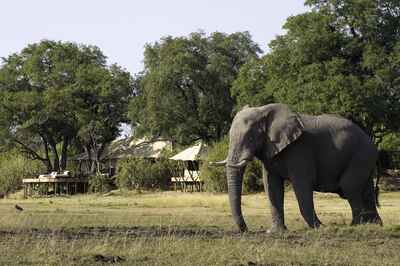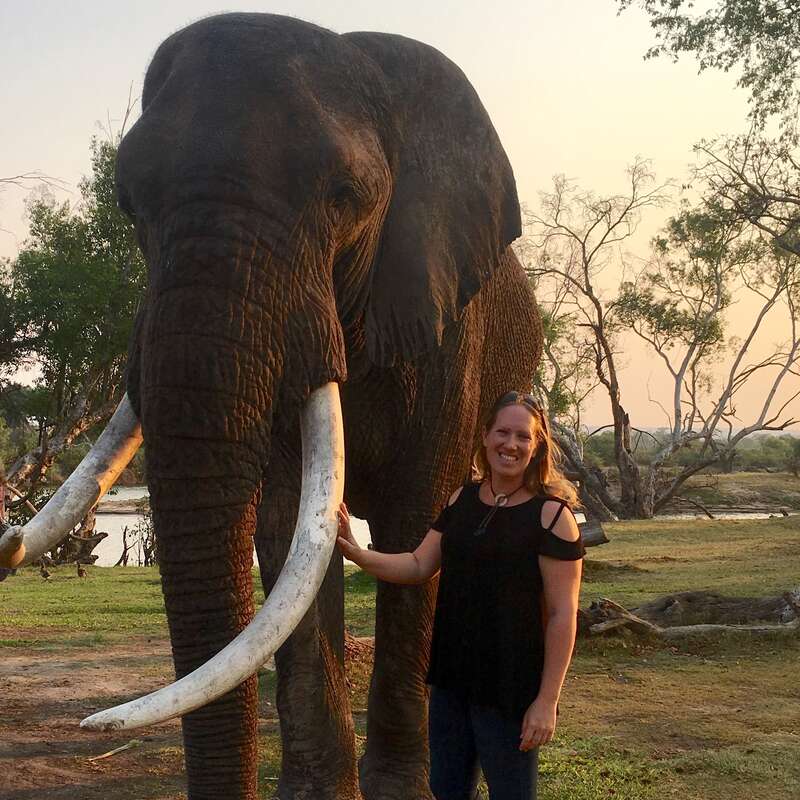About Zarafa Camp
Set within Botswana's private 1,350km² Selinda Reserve, the intimate Zarafa Camp (formerly called Zibadianja) ...
... was completely relocated and rebuilt in 2008. It now occupies a scenic setting atop an ancient, slightly raised earth bank, beside the lagoons and floodplains, which stem from the Zibadianja Lagoon. It is one of Botswana's most exclusive, most beautiful and most costly camps.
Zarafa has succeeded in combining luxury and adventure in an exclusive yet informal setting. The camp is beautifully designed, well run, and goes the extra mile to cater for its guests' wishes. The even more exclusive Dhow Suite is a great option for families or friends travelling together. If you're looking for indulgence, great game viewing, polished guiding and service, this is the place – albeit with a price tag to match. Though there's a good variety of wildlife here year round, the best time to visit is without doubt during the dry season, from June to October.
Our view
Zarafa has succeeded in combining luxury and adventure in an exclusive yet informal setting. The camp is beautifully designed, well run, and goes the extra mile to cater for its guests' wishes. The even more exclusive Dhow Suite is a great option for families or friends travelling together. If you're looking for indulgence, great game viewing, polished guiding and service, this is the place – albeit with a price tag to match. Though there's a good variety of wildlife here year round, the best time to visit is without doubt during the dry season, from June to October.
Accommodation
4 chalets & 1 suite
Children
Best for 12+
Open
All year
Activities

4WD Safari

Birdwatching

Boat trip

Guided walking safari

Helicopter

Mokoro

Night drive

Private activities
Traveller reviews of Zarafa Camp
20 real, un-edited reviews from Expert Africa's travellers.
Arrived 3 May 2025, 4 nights
"Zarafa Camp review: Absolutely fantastic!"
Overall rating: Excellent
Arrived 30 Aug 2022, 3 nights
"Zarafa Camp review"
Overall rating: Excellent
Arrived 24 May 2022, 4 nights
"Zarafa Camp review"
Overall rating: Excellent
Arrived 4 Jul 2021, 3 nights
"Zarafa Camp review"
Overall rating: Excellent
Arrived 29 Jun 2021, 3 nights
"Zarafa Camp review"
Overall rating: Excellent
Arrived 24 May 2021, 4 nights
"Zarafa Camp review"
Overall rating: Excellent
Arrived 24 May 2021, 4 nights
"Zarafa Camp review"
Overall rating: Excellent
Arrived 30 Aug 2019, 3 nights
"Our favorite stay"
Overall rating: Excellent
Arrived 5 Jun 2018, 3 nights
"Luxury Glamping in the Bush"
Overall rating: Excellent
Arrived 31 Jul 2016, 3 nights
"Outstanding experience, up close and personal"
Overall rating: Excellent
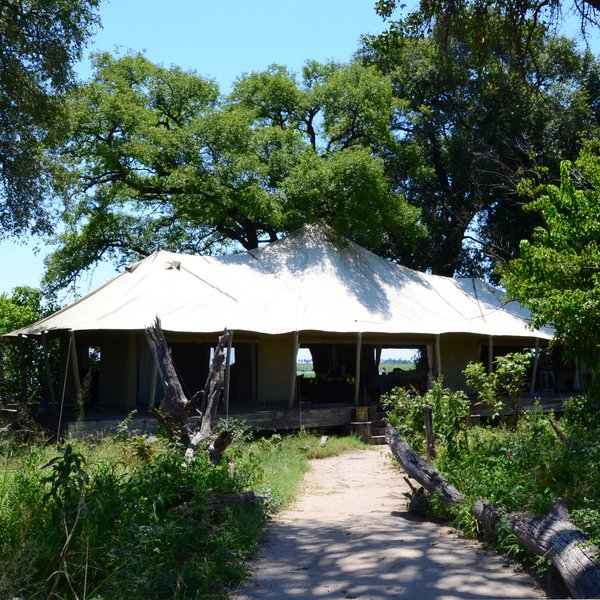



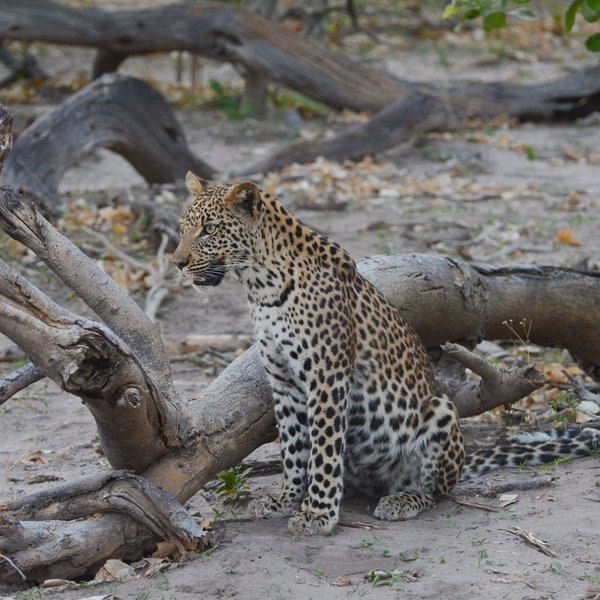
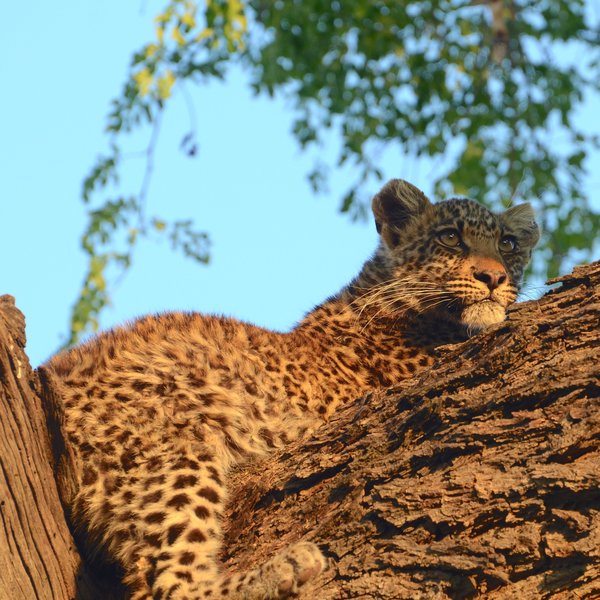

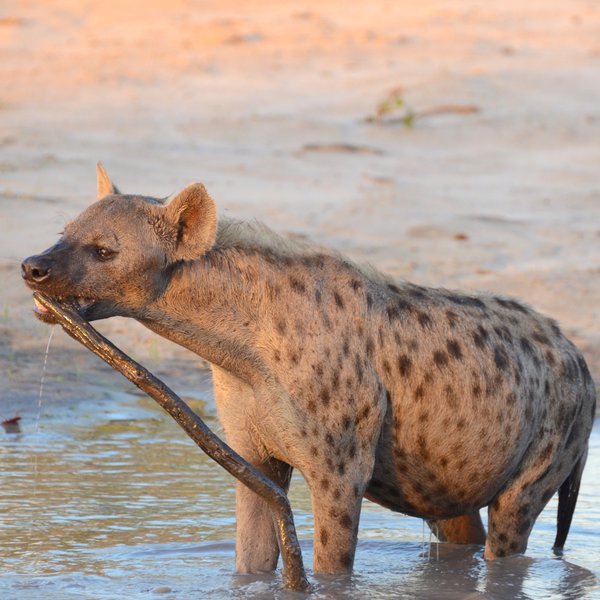

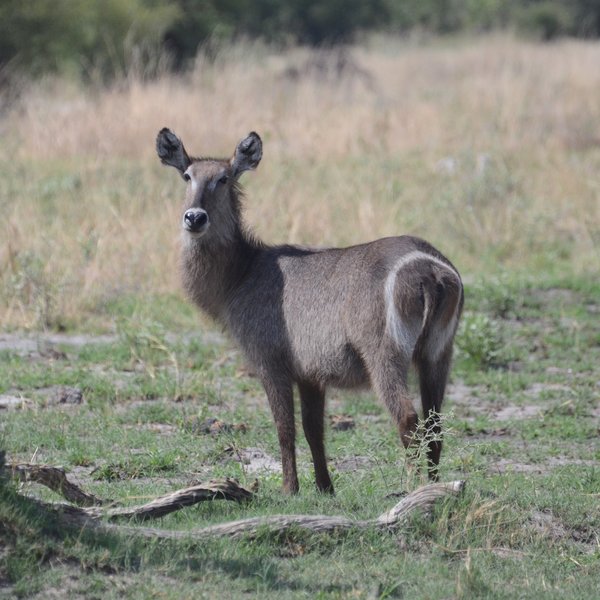
Expert Africa's gallery
When we travel we take lots of photos ourselves to give you a real and un-edited view of the safaris. See our 30 pictures and 1 videos of Zarafa Camp to get the candid view.
View gallerySafaris visiting Zarafa Camp
Just ideas, we'll always tailor-make a trip for you
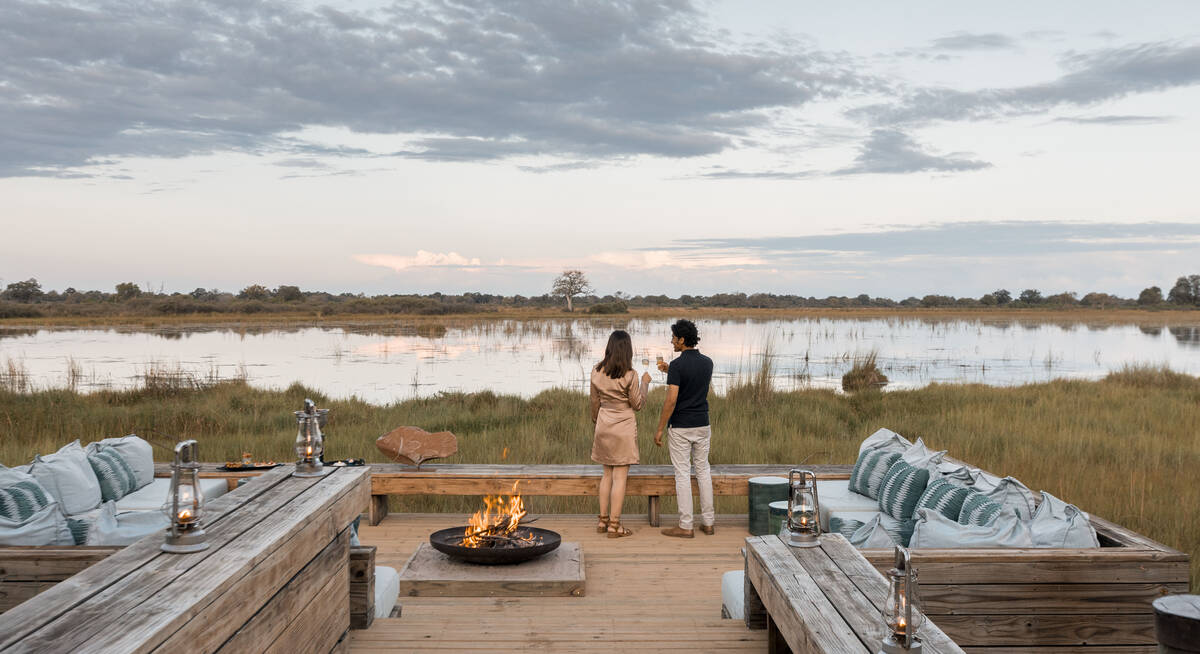
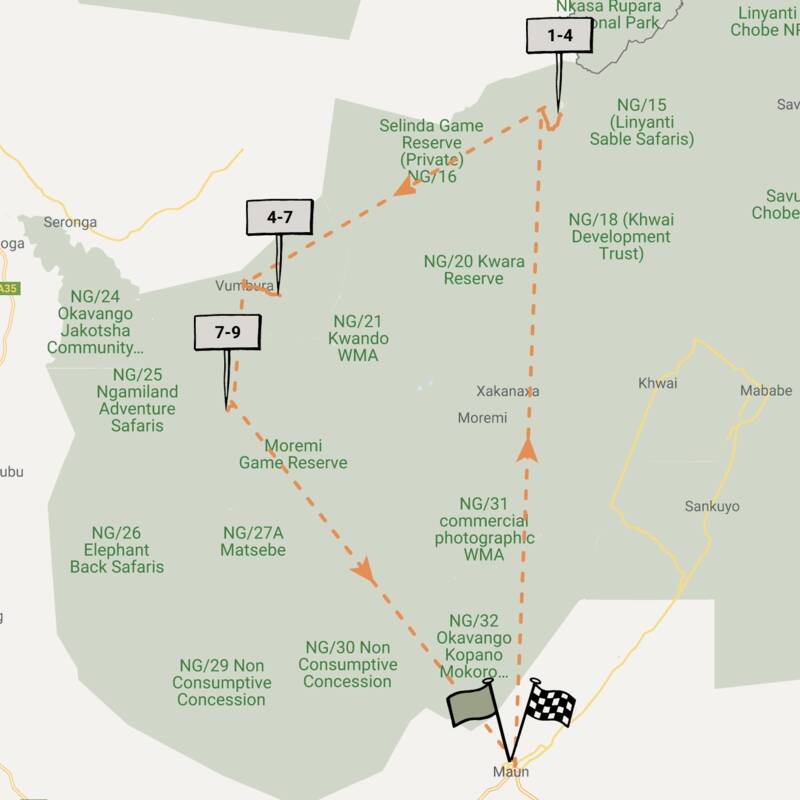
Reedbuck Safari
8 days • 3 locations • 1 country
MAUN AIRPORT TO MAUN AIRPORT
Focussing on the Okavango Delta and combining the crème de la crème of Botswana’s camps – Zarafa, Vumbura Plains and Mombo – this is one of the finest safari experiences in Africa.
Visiting Moremi & Surrounds, Okavango Delta and 1 other area
US$23,410 - US$36,280 per person
Zarafa Camp: Our full report
Set within Botswana's private 1,350km² Selinda Reserve, the intimate Zarafa Camp (formerly called Zibadianja) ...
... was completely relocated and rebuilt in 2008. It now occupies a scenic setting atop an ancient, slightly raised earth bank, beside the lagoons and floodplains, which stem from the Zibadianja Lagoon. It is one of Botswana's most exclusive, most beautiful and most costly camps.
Zarafa shares the Selinda Reserve with its more modest sister camps, Selinda Camp, and the more rustic Selinda Explorers Camp. The eastern side of the reserve is dominated by the wide, spreading depression of the Magwegqana Spillway (often known as the Selinda Spillway). This consists largely of open tracts of savannah, dotted with raised, island-like stands of mokolwane palm, leadwood and other riverine vegetation. Though a prolonged drought in 2016 affected water levels, in recent years the Spillway has filled with water during the floods, forming a link between the waters of the Okavango and Linyanti deltas.
Zarafa stands in a line of lush, riverine vegetation, which runs roughly north-west/south-east. Even a casual glance at a satellite map of Zarafa will show that Zarafa is positioned on a clear and ancient line dividing two regions of different vegetation. In fact, it's on the high side of a geological faultline, which is the southern extreme of Africa's Great Rift Valley – even if it is only a few metres higher than the water in front of it.
In front of the camp, to the north and west, are the reedbeds and waterways beside the permanent Zibalianja Lagoon, and beyond these are tracts of savannah, where most activities are conducted. This is an attractive, open environment where wildlife can easily be spotted at a distance. Behind the camp, to the south and east, is a fairly solid belt of mopane woodlands, where the wildlife is often of much less interest during the dry season, though large herds of elephant and buffalo move through as the winter months progress.
Zarafa is co-owned by renowned wildlife filmmaker Dereck Joubert and his wife, photographer Beverly Joubert, who have tried to create their ultimate safari camp in Zarafa. Thoughtful touches are evident throughout, from the distinctive décor and personalised guest stationery to the Swarovski binoculars, digital SLR camera and memory cards provided for guests' use.
Zarafa's accommodation consists of just four sprawling marquee-style tented suites, raised on old railway sleeper decks, and each with a private plunge pool and outdoor shower. An ornate Zanzibari door leads into a spacious lounge area, separated by canvas partitions from an equally expansive open-plan bedroom and bathroom. Polished wooden floors are lined with rugs, topped with leather furniture and wooden chests to create an early-settler feel. All the canvas is double-sided, helping the suites remain cool in summer and warm in winter, while the roof of each suite has three layers: an inner lining for decoration and two outer layers for protection and insulation.
In each suite there are lovely extra touches, including guest stationery and a wildlife sighting checklist, to a small range of wildlife books. There is even a yoga mat and weights for those who feel like a light workout, and an exercise bike on the wooden deck alongside the private plunge pool.
A number of chests and leather and brass-trimmed boxes are stocked with a selection of alcoholic beverages, mixers, tea and coffee, ice and chilled fresh water. You’ll find bottles of Amarula, brandy, whisky and gin, as well as decanters of sherry and port, but drinks can be supplied to suit your preferences.
The bedroom in each of Zarafa's suites has a large bed with mosquito net and overhead ceiling fan, while behind is plenty of hanging and shelving space where you'll find bathrobes, a hairdryer, an umbrella, insect repellent and spray, and a digital safe. Also hidden away here is an air-conditioning unit designed to silently and effectively cool the sleeping area within the mosquito net.
The bathroom facilities include a luxuriously deep copper bath, indoor rain-head shower, twin basins and a separate flush toilet. For the winter months a copper gas heater helps to keep the suite warm – an almost unheard-of luxury, even by the high standards of Botswana's other safari camps!
For families, or small groups of friends, Zarafa’s Dhow Suite is a brilliant option. A stunning two-bedroomed villa is situated just a few minutes’ walk from the main camp, though has a secluded, exclusive feel to the location. Operating completely independently of the main camp, and also catered for separately, the suite is very similar in style to the main camp, down to the exploration-style décor and artwork, and it can cater for up to four adults or a family group of five in two individual en-suite bedrooms. With its own private pool, along with a private chef, camp manager, staff and guide, the Dhow Suite provides the ultimate exclusive experience.
A large marquee encompasses Zarafa's main area, its lounge, dining room, bar and library all beautifully decorated in the same early-settler style as the suites. This main area leads out to an extensive multi-level deck where, weather permitting, most meals are served. Meals are generally served privately, though the team will happily set up larger tables for groups of guests if preferred.
A neighbouring tent houses one of the nicer gift shops in Botswana's camps, stocking locally made goods and quality African artefacts as well as some very stylish clothing suitable for a safari, and both wildlife films and stunning hardback photography books by Dereck and Beverly Joubert. Additional facilities include a gym with fantastic views and a spa, though guests can also opt for in-room massage treatments.
Nothing is too much trouble for the subtly attentive camp team: from adding your favourite drinks to your minibar, adjusting the evening menu to suit your tastes, sending your guide with a delicious bush breakfast or setting up exquisite sundowner spots, whether that’s out on a game drive, or in camp itself.
Each area of Zarafa overlooks the floodplains around the Zibadianja Lagoon, from the shade of giant jackalberry trees. Wildlife, particularly elephant and hippo, is a common sight in front of and around camp. On our last visit, just at the start of the dry season, we enjoyed lunch while a breeding herd of elephant wandered past slowly, and on a previous visit we were lucky enough to watch from our breakfast table as a pack of wild dogs – nine adults and seven pups – played directly in front of the camp near the water's edge.
With a maximum of eight guests, Zarafa Camp can be very flexible when it comes to activities. They offer day and night game drives, usually in the mornings and afternoons/early evenings, with full-day game drives on request. All are conducted in custom-built Land Cruisers, each with individual bucket seats and a removable canvas roof. A private vehicle and guide can be pre-booked at additional cost, though groups of four or more automatically get their own private vehicle at no extra charge. Short or full-morning walks led by an armed guide can be arranged, as can catch-and-release fishing trips using spinners or bait – though note that these are not available during January and February, when fishing is banned by the Botswana authorities.
Though seasonal, wildlife viewing on the Selinda Reserve is particularly good during the dry period from June to around late October/early November, although we have also had phenomenal game viewing in the off season. The combination of wet and dry habitats attracts a wide range of species, including a variety of birdlife, from waterbirds such as black-winged stilt, African skimmer and grey heron to double-banded sandgrouse and Kittlitz's plover. Specials in the reserve include slaty and black egret, and coppery-tailed coucal, all watched over by predators such as the African fish eagle and bateleur eagle.
We’ve enjoyed wonderful sightings from Zarafa camp throughout our stays over the years. We were lucky to see roan on one trip, quite a difficult species to spot in Botswana, and have spent many happy hours watching lionesses with their cubs in the area around the camp. On our last visit we witnessed a lion stealing and feasting on a fresh kudu carcass, which it proceeded to drag next to our vehicle and try to bury underneath nearby vegetation to hide it from circling vultures.
From the end of April through December, Cape buffalo migrate into the area, leading to epic predator–prey encounters with lion. The June–July zebra migration from the Savute and Chobe area can also bring up to a thousand zebra into the reserve, and guests can expect huge herds of elephant in the winter season (between about November and April).
Another highlight at Zarafa is cruising the lagoon aboard the large pontoon boat, humorously titled HMS Zibadianja. Furnished with couches, a dining table and chairs, this is ideal for brunch and sundowner cruises while watching hippos, elephant and other wildlife.
Activities
4WD Safari
Birdwatching
Boat trip
Guided walking safari
Helicopter
Mokoro
Night drive
Private activities
Families & children
- Attitude towards children
- Children aged six and over are welcome at Zarafa, but those aged 12 and under must be booked onto a private vehicle for their activities. That said, families of four or more will be provided with a private vehicle free of charge.
- Property’s age restrictions
- Minimum age six years.
- Special activities & services
- Zarafa Camp has guides who are great with children, and can offer alternative and slightly tailored activities such as fishing or short canoe trips. The camp also offers the 'Young Explorers' programme, which includes child-friendly activities such as animal tracking, plaster casting tracks, and making traditional bows and arrows.
Zarafa can offer childminding from one of their housekeeping team, but not someone specially trained in childcare. - Equipment
- No special equipment for children is provided, although an additional bed can be added to the suites to create a triple.
- Generally recommended for children
- We'd recommend Zarafa for children aged 12 and over, who have a genuine interest in wildlife.
- Notes
- As Zarafa is unfenced, and wild animals roam freely through the camp, children must be kept under constant, close supervision by a parent or guardian.
Food & drink
- Usual board basis
- Full Board & Activities
- Food quality
- Zarafa is one of the very few Relais & Châteaux properties in Botswana. The quality and selection of food is extraordinary considering the remoteness of the camp. Meals are light, and plenty of thought and care has been put into the menus, which are designed to be delicious yet light and healthy. Vegetarian meals and any particular dietary requirements can be catered for on request, and menus are extremely flexible to suit guests' food preferences.
One of the advantages of staying at Great Plains' camps is that the chefs have complete freedom to create their own menus. As a result, you can stay at different Great Plains' camps for over a week, sampling creative, delicious dishes, yet not repeat a meal.
On our last stay, we thought food was some of the best that we experienced in Botswana. We headed out early from camp so we had our breakfast in the bush or in fact in the vehicle, watching lions. This was a scaled back version or the sort of breakfast you could expect from camp and on our last visit we enjoyed a choice of baked eggs, cheese and charcuterie, freshly baked poppyseed muffins, yoghurt pots with a fresh fruit salad, with a selection of preserves and a variety of cereals.
Lunch consisted of a mushroom soup served with seeded rice crackers, followed by a tasting platter consisting of several dishes to sample – including a melt in the mouth beef goulash and a selection of salads, including quinoa and corn, and a fresh leafy salad. We chose a light apple sorbet to finish, though a cheese and fruit plate was an alternative.
Afternoon tea, with sweet or savoury snacks is served before the afternoon activity, accompanied by a selection of hot or cold drinks. We sampled a delicious coconut and lime cake, though the cracker bites with salmon mousse looked very tempting!
Dinner is generally a four- or five-course taster menu. Each course has a suggested accompanying wine, though there’s also an extensive wine cellar if you’d prefer to choose something different.
The meal on our last visit was sensational. It kicked off with a starter centred around beetroot served in a variety of ways, a terrine, with chocolate and beetroot curd, dehydrated beetroot. This was following by a light corn chowder soup, with seeded crackers, mixed roasted seeds and herb oil. The main course was a perfectly cooked beef fillet, with red wine jus, roasted sweet potatoes, baby carrots and honey roasted parsnips. The final course centred around chocolate; mousse, ganache, ice cream, crunch and sauce – each element light and delicious. The talented chef introduced each meal and the thought behind its conception as well as the wines to go with each. It was an unforgettable evening. - Dining style
- Mixture of group dining and individual tables
- Dining locations
- Indoor and Outdoor Dining
- Further dining info, including room service
- On request, i.e. private meals for special occasions.
- Drinks included
- All drinks that are stocked in camp, including premium brand spirits and champagne.
Guests are encouraged to use the filtered water supply in the camp's main area to top up the stainless-steel flasks that are placed in each room; these are also replenished daily by the staff. We don't recommend that travellers drink from the tap
Our travellers’ wildlife sightings from Zarafa Camp
Since mid-2018, many of our travellers who stayed at Zarafa Camp have kindly recorded their wildlife sightings and shared them with us. The results are below. Click an animal to see more, and here to see more on our methodology.

100% success

100% success

100% success

100% success

100% success

100% success

100% success

90% success

78% success

60% success

60% success

33% success

22% success

13% success

11% success

0% success
Getting there
- Location
- Kwando-Linyanti area, Botswana
- Ideal length of stay
- We recommend three nights or more at Zarafa Camp, possibly in combination with one of its sister camps to the south west, such as the equally luxurious Duba Plains.
- Directions
- Zarafa is accessible only by light aircraft; it's roughly a 45-minute flight from either Maun or Kasane. The camp is about an hour's drive from Selinda airstrip, depending on wildlife sightings on the way.
- Accessible by
- Fly-and-Transfer
Special interests
- Honeymoons
- With its large and luxurious suites overlooking the Zibadianja Lagoon, Zarafa is an ideal place for a Botswana honeymoon retreat. The staff will happily set up a private dinner on your veranda or a romantic cruise on the pontoon boat.
- See ideas for Honeymoons in Botswana
- Birdwatching safaris
- Zarafa Camp is situated close to the Zibadianja Lagoon which is known for its colony of African Skimmers. Each suite comes with its own pair of Swarovski binoculars - a massive boon for anyone with a keen interest in birds.
- See ideas for Birdwatching safaris in Botswana
- Photography safaris
- Co-owned by wildlife filmmakers and photographers Dereck and Beverly Joubert, Zarafa is one of the best camps for photographers in Botswana. Canon 5D cameras are available for guests’ use and the guides are great at positioning for pictures.
- See ideas for Photography safaris in Botswana
- Wellbeing retreats
- As you might expect from such a luxurious camp, Zarafa offers a range of in-room massages and treatments as well as an open-air gym and private plunge pools in each room, perfect for some rest and relaxation to enhance your Botswana safari.
- See ideas for Wellbeing retreats in Botswana
- Private safari camps & lodges
- The Zarafa Dhow Suite is one of the most luxurious private options in Botswana, offering opulent accommodation and privately guided activities for families or small groups in one of northern Botswana's most prolific wildlife areas.
- See ideas for Private safari camps & lodges in Botswana
- Luxury safaris
- Zarafa offers sheer luxury and adventure in an excellent game viewing area. Thoughtfully decorated sumptuous suites, attentive service and top-notch guiding: if you’re looking to indulge on your safari holiday, then look no further.
- See ideas for Luxury safaris in Botswana
Sustainability
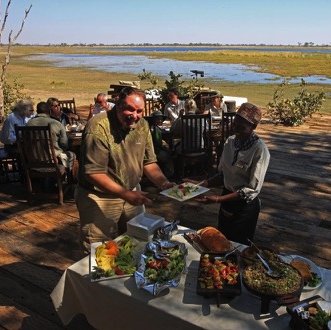
Saying no to plastic waste and yes to solar energy
Reducing the negative environmental impact of daily activities is a priority at Zarafa Camp. Along with many other camps in the Delta, instead of relying on noxious and noisy diesel generators, Zarafa Camp takes pride in its investment into solar. One of the first camps in the Okavango Delta to establish itself as fully solar powered, th camp’s ‘solar farm’ now generates enough energy to meet all guests' requirements - from the cleanliness of the pools to cold drinks on a hot afternoon.
Zarafa Camp is also committed to protecting local wildlife, relocating rhinos in Botswana and having a robust anti-poaching surveillance system throughout the area. These values have been reflected in the subsequent creation of the Great Plains Foundation, whose focus is to support, facilitate and protect all types of wildlife. Following one ‘plastic free’ July, the Foundation also pledged to commit to removing single use plastic throughout the camp on a permanent basis.
See more great sustainability projects in Botswana
Communications
- Power supply notes
- Solar power is backed up by a generator if needed. The system is capable of accommodating the low-wattage hairdryers that are provided in the bathrooms.
- Communications
- Wi-Fi access is in the suites only, but not in the main areas. There is no cellphone reception. There is a satellite phone and radio to contact Maun in an emergency.
- TV & radio
- None
- Water supply
- Borehole
- Water supply notes
- All the suites have plumbed hot and cold running water for showers, and flushing toilets. Guests are encouraged to use the filtered water supply in the camp's main area to top up the stainless-steel flasks that are placed in each room; these are also replenished daily by the staff. We don't recommend that travellers drink from the tap.
Health & safety
- Malarial protection recommended
- Yes
- Medical care
- A comprehensive first-aid kit is kept in camp and guides carry field kits on activities. Both managers and guides are first-aid trained. In an emergency, medical evacuation to Maun can be arranged. Please note that it is only possible to fly out of the bush airstrips during daylight hours.
- Dangerous animals
- High Risk
- Security measures
- Due to the presence of big game, and the fact that Zarafa Camp is unfenced, guests are escorted to their rooms after dark. Alarms are provided in the rooms to attract attention in case of emergency.
- Fire safety
- There are fire extinguishers in the common areas and in each suite.
Useful info
- Disabled access
- Not Possible
- Laundry facilities
- A full laundry service is included at Zarafa Camp.
- Money
- The camp does not offer any money-exchange facilities. Each suite has a digital safe.
- Accepted payment on location
- Mastercard and Visa credit cards are accepted; Diners and Amex are not. No commission is charged on credit-card transactions. Cash payments may be made in GB pounds, US dollars, euros, South African rand and Botswana pula.
Plan and book your trip with Expert Africa
All of our trips are tailor-made, so we'll always adapt them to suit you. Talk to an Expert and let us plan and arrange your perfect trip.

Talk to an Expert
Call or email us now! We’ll match you with the Specialist in our team who is best suited to help you. Then together we can start planning your trip.

Set up your itinerary
Based on our experience and your ideas, your specialist will create a detailed, costed itinerary. We’ll refine it together, until we have a trip that you’re perfectly happy with.

Prepare for your trip
The same Specialist will make the seamless arrangements for your trip, send you detailed travel documents, and be available to answer any questions before you depart.

Travel with peace of mind
After you set off, you’ll be cared for by our partners in Africa, most of whom have worked with Expert Africa for decades. And if you ever need us urgently, we’re available 24/7.

When you return
We love to learn about your trip, and so will always be grateful if you’ve the time to give feedback to your Specialist when you return.
Zarafa Camp's location
Look closer at the environment and surroundings of Zarafa Camp.
Excursions from Zarafa Camp
Optional extra day-trips and excursions possible whilst you're staying at Zarafa Camp. Talk to us: these are usually best arranged before you go.
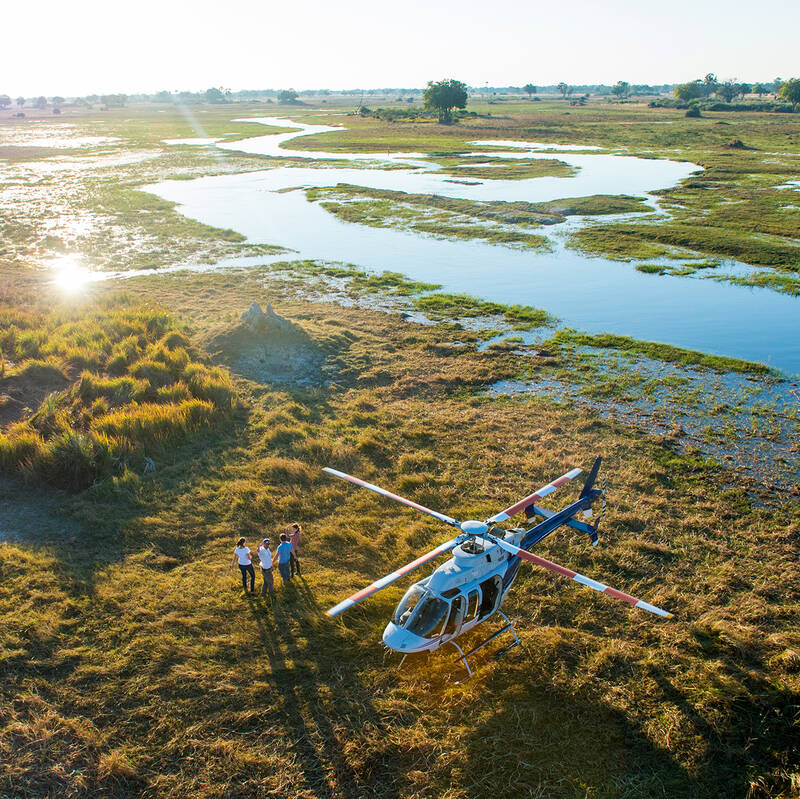
Helicopter Flight - Botswana
Various: from 30 minutes to half a day.
Low-flying, agile and offering superb views, helicopters are an ideal way to move around the Okavango Delta.You can use them instead of fixed-wing inter-lodge transfers or as an addition to other wildlife watching activities, and of course, helicopters can hover to allow that perfect pic, whereas fixed-wings can’t.
More about Helicopter FlightOther lodges in Kwando-Linyanti area
Alternative places to stay in this same area.
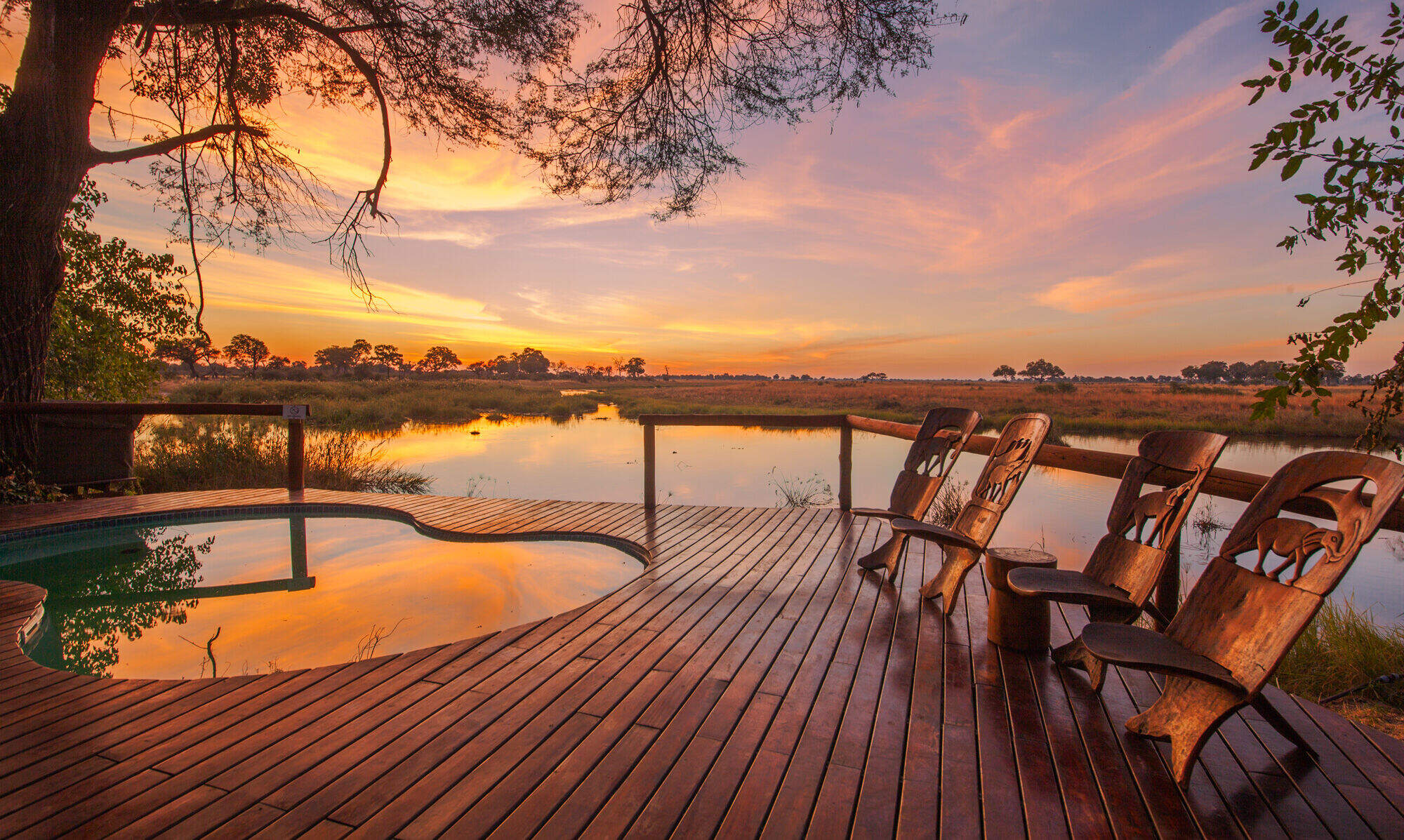
Lagoon Camp
Within the vast Kwando Reserve, renowned for its wild dogs, Lagoon Camp offers excellent game viewing that focuses on predators.
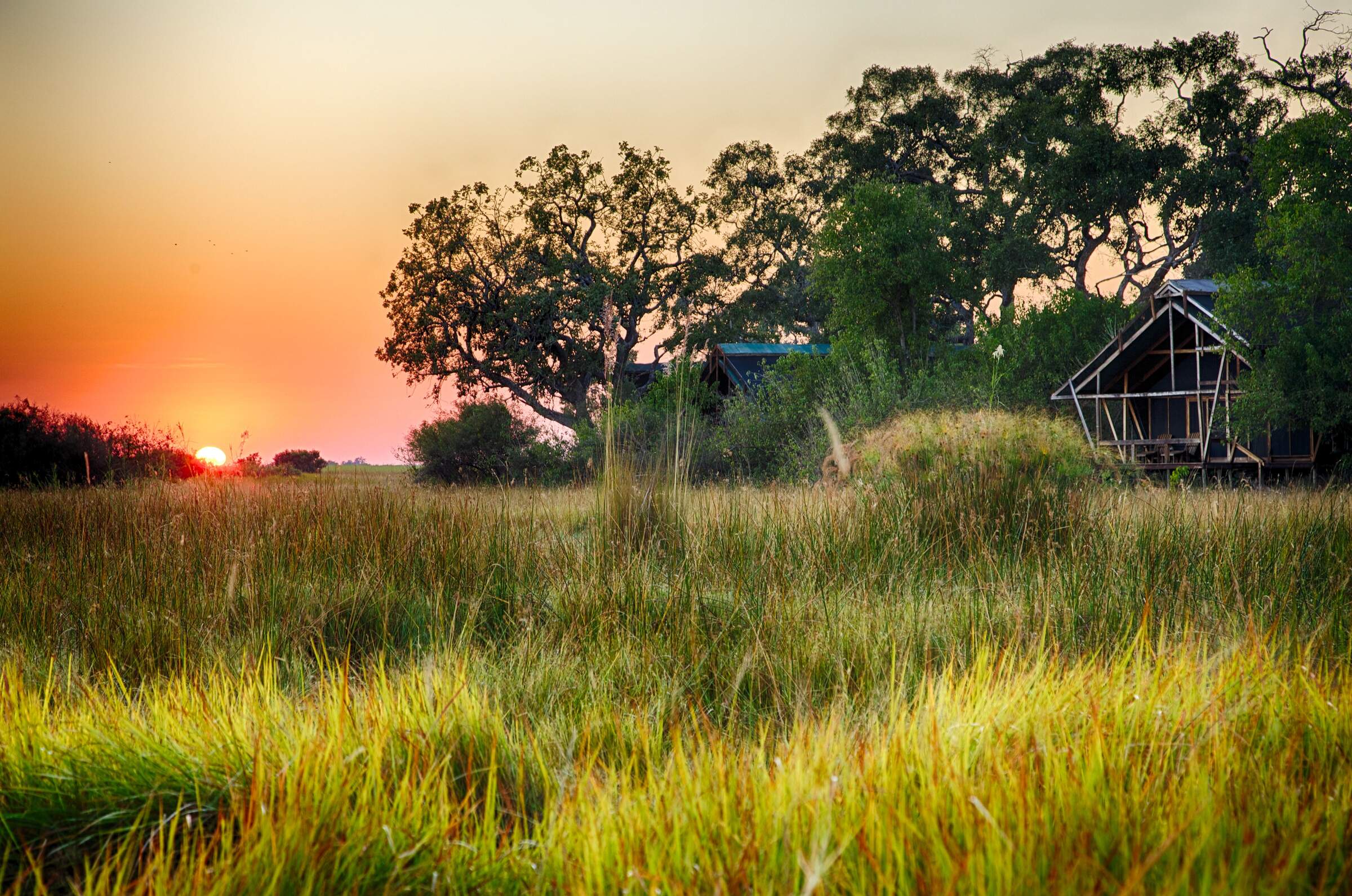
Lebala Camp
With enthusiastic guides and trackers, Lebala – in a vast private reserve – is particularly well-placed for seeking wild dogs.
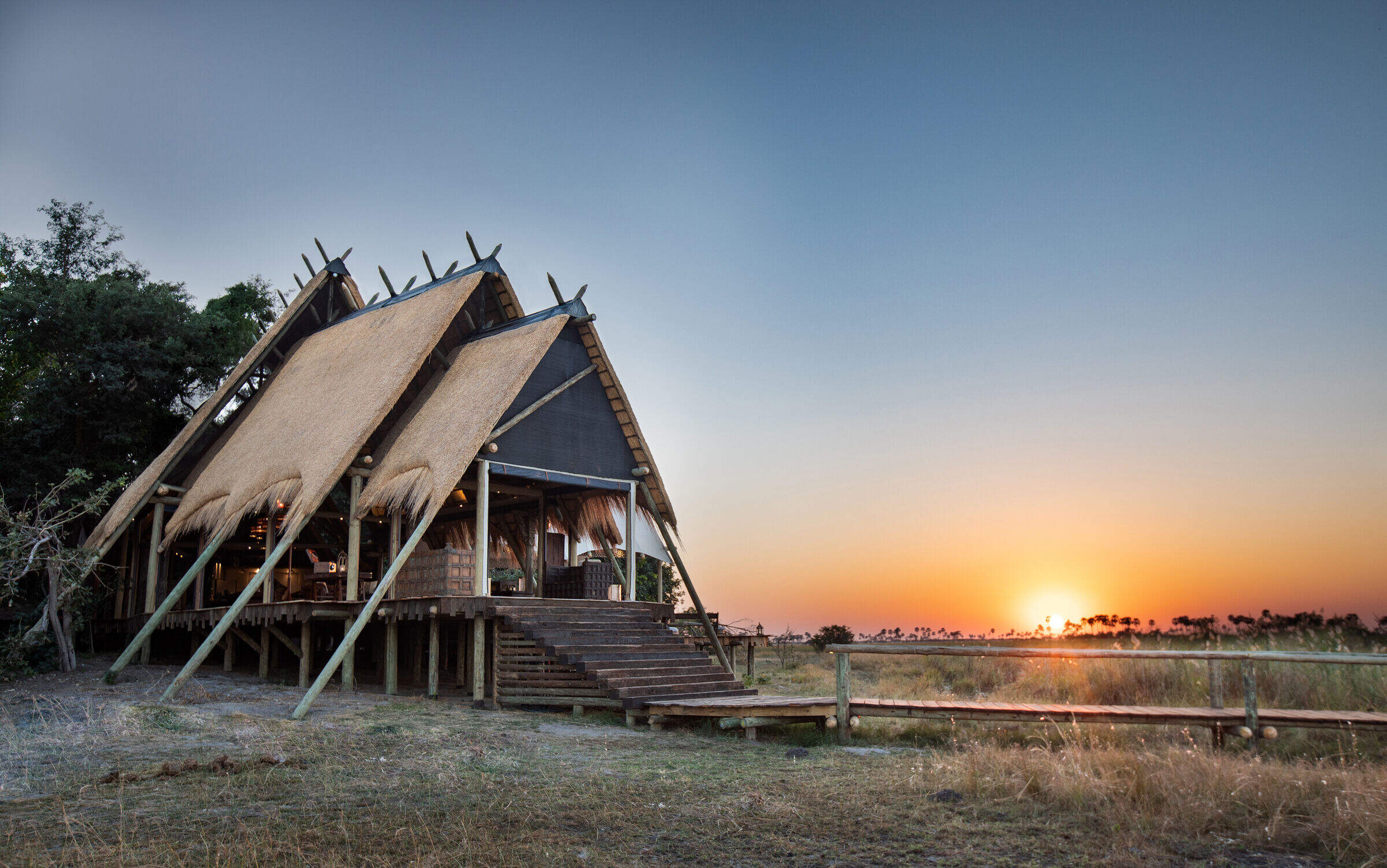
Selinda Camp
In an attractive area that is particularly rich in game between June and November, the luxurious Selinda Camp caters particularly well for photographers.
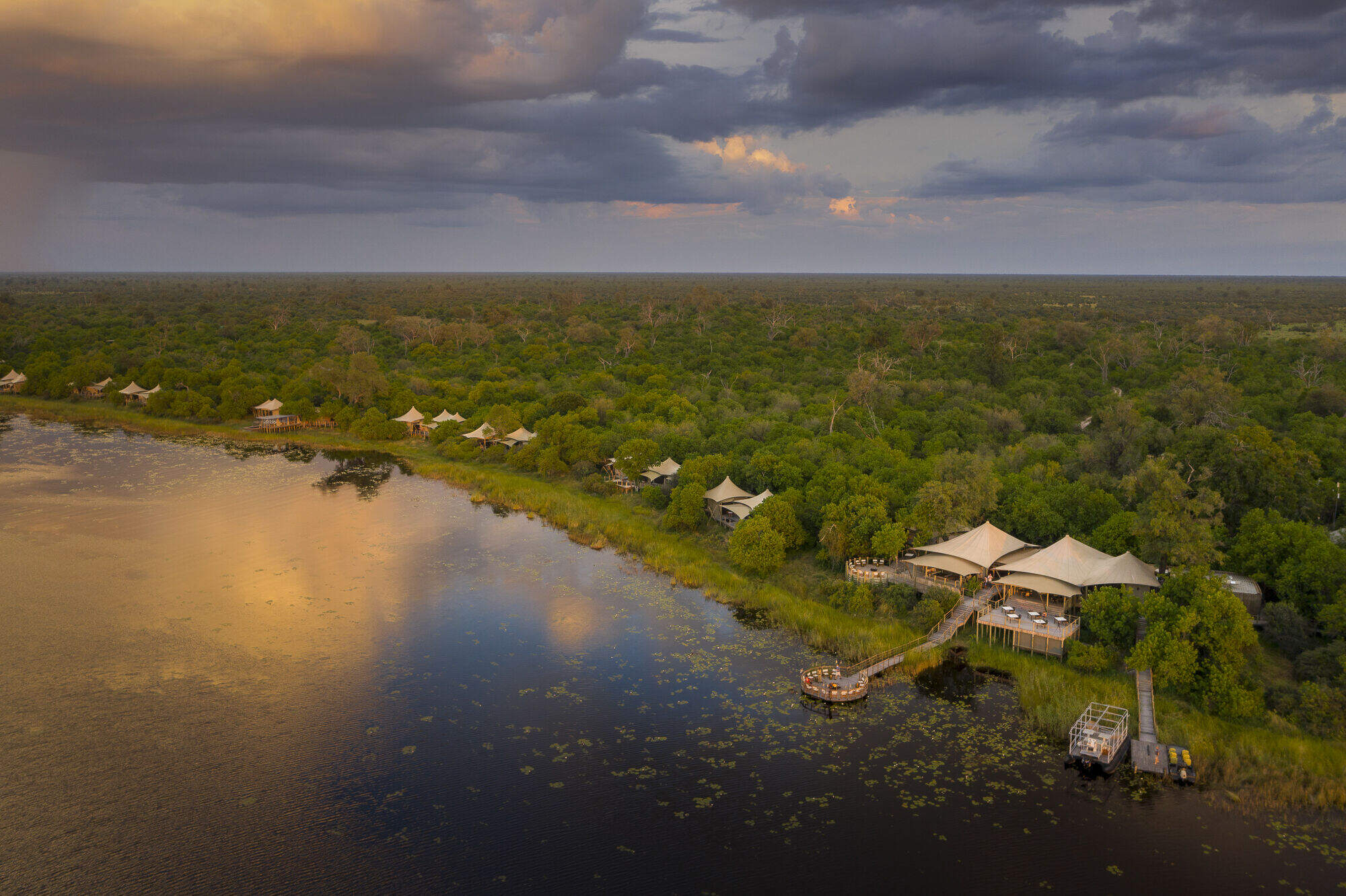
DumaTau
DumaTau, in the private Linyanti Reserve, offers game drives, seasonal boat cruises and walks. Wildlife safaris here are quite seasonal, and are at their best during the height of the dry season, between June and October.
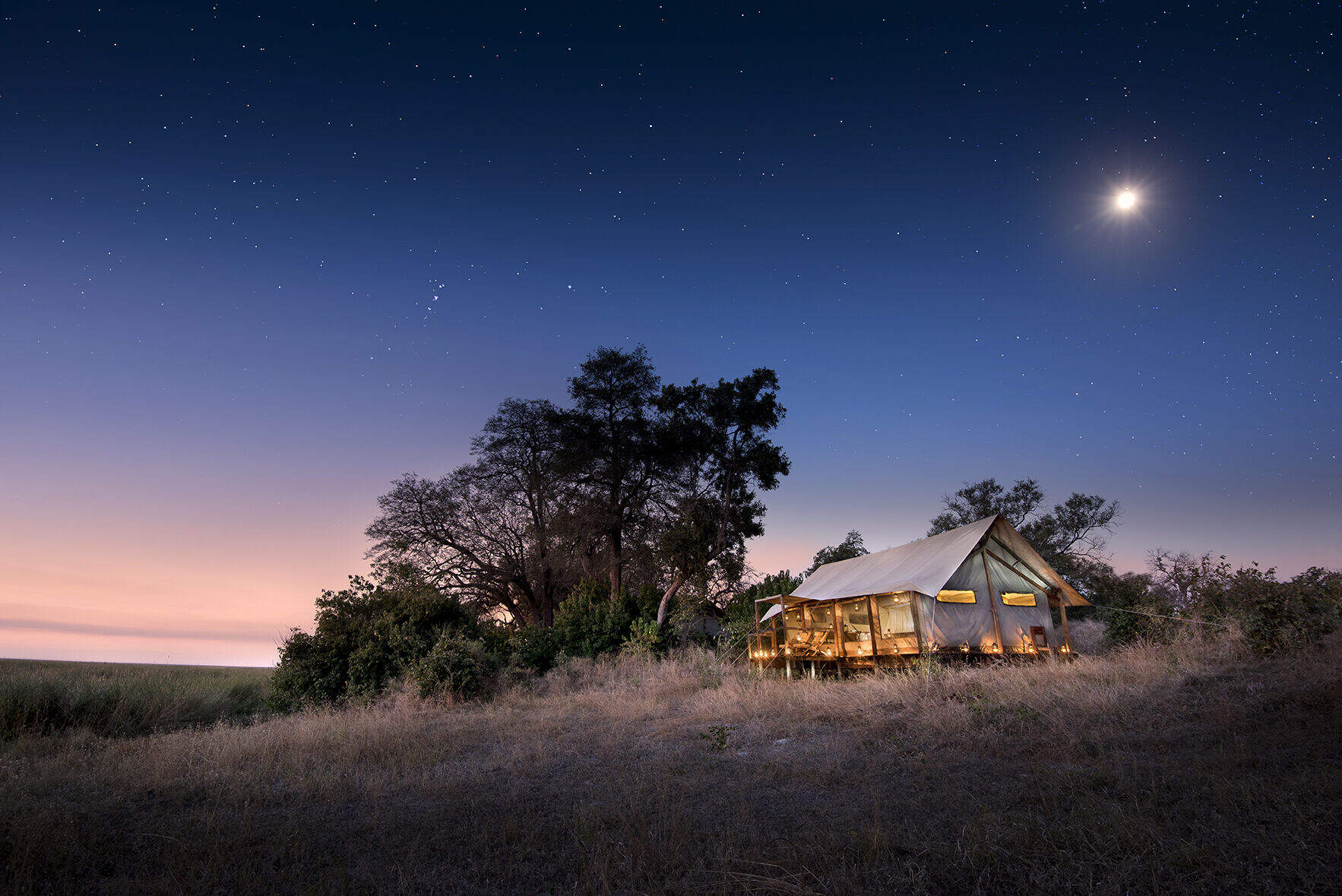
Linyanti Bush Camp
Linyanti Bush Camp blends relative simplicity with numerous activities and very good guiding.
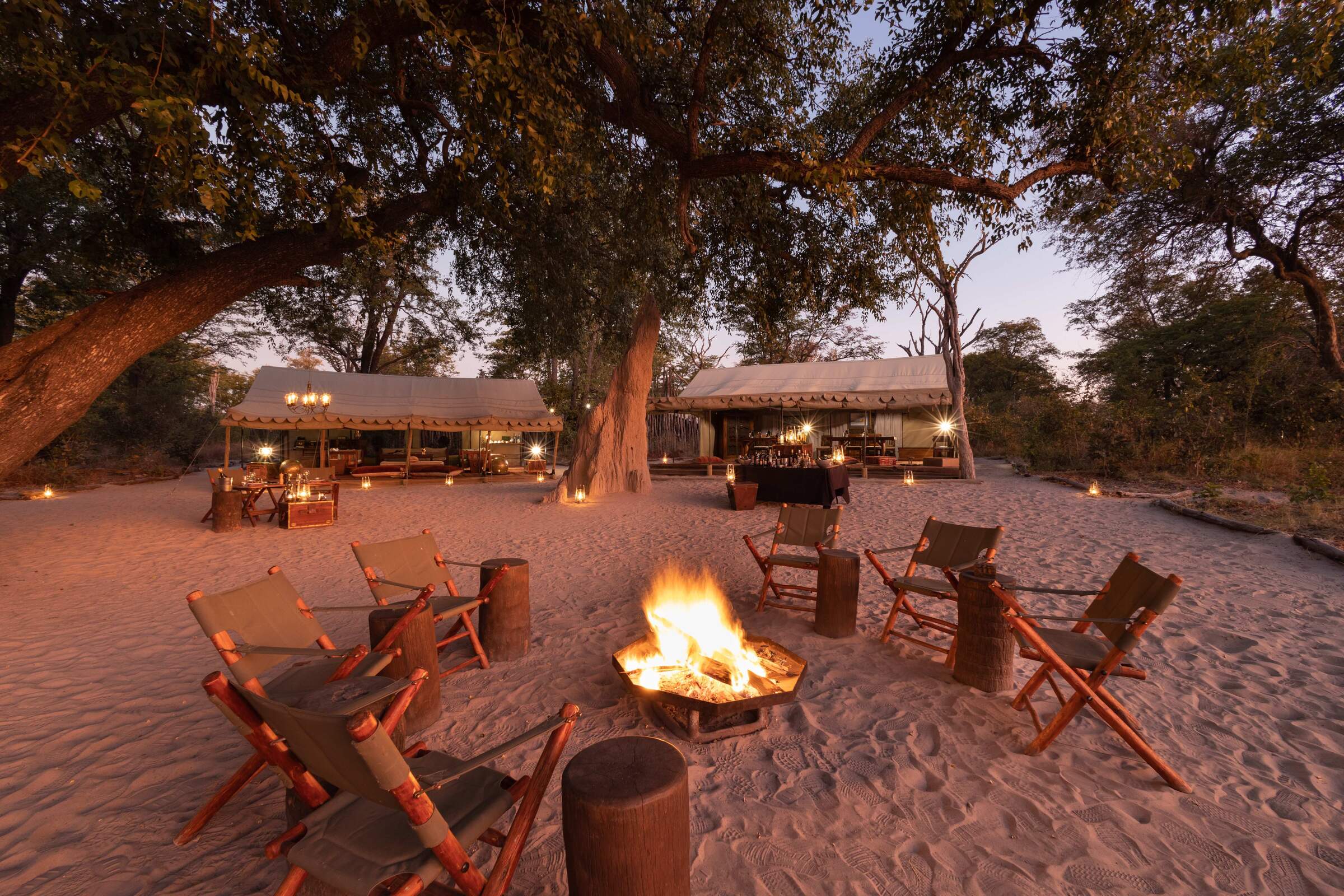
Selinda Explorers Camp
The luxurious, traditional tented Selinda Explorers Camp offers a mix of walking, canoeing and game drives led by really top notch guides in a game-rich area.
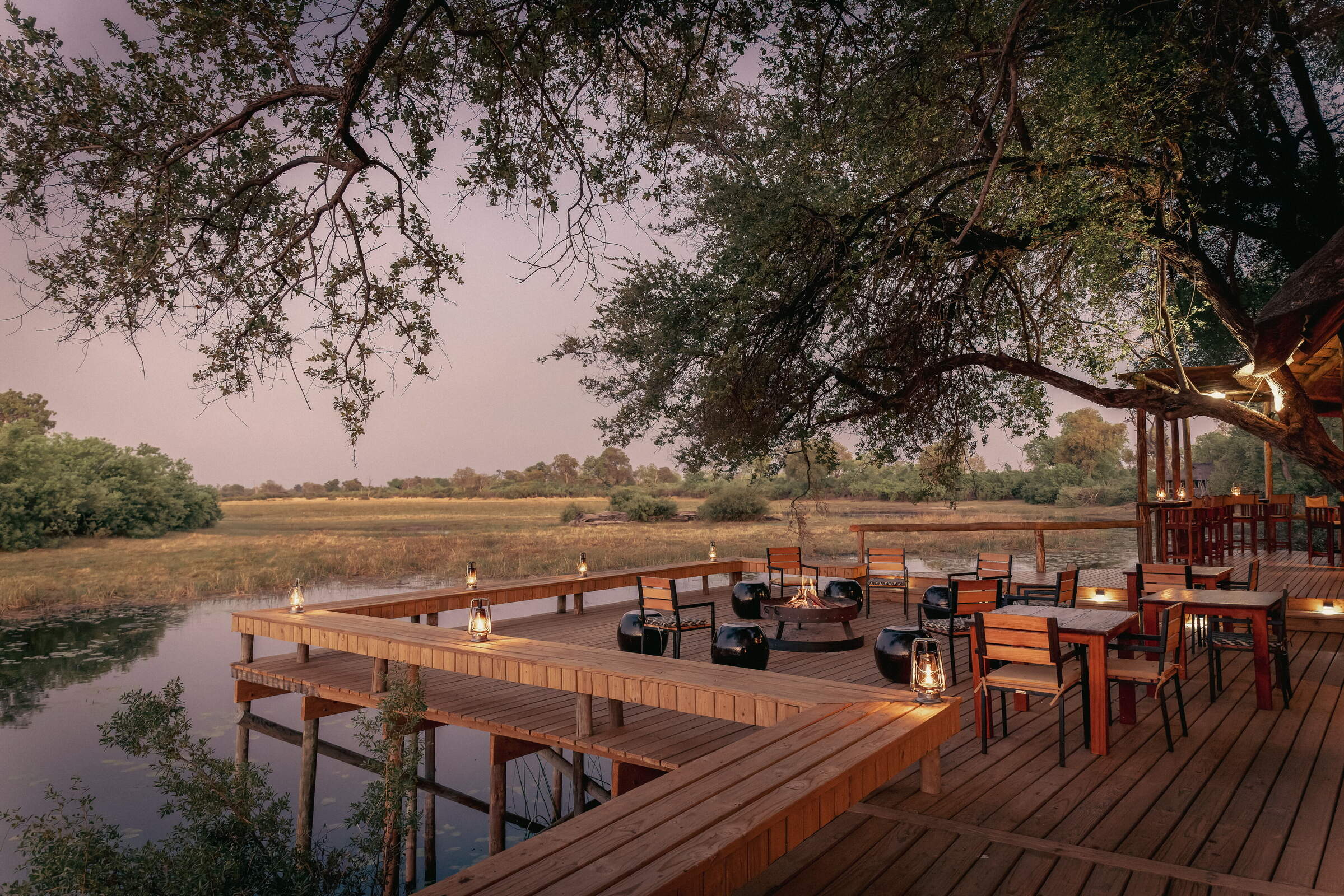
Savuti Camp
Set above the Savuti Channel, the refurbished seven-room Savuti Camp offers the potential for viewing large herds of elephant and significant lion encounters.
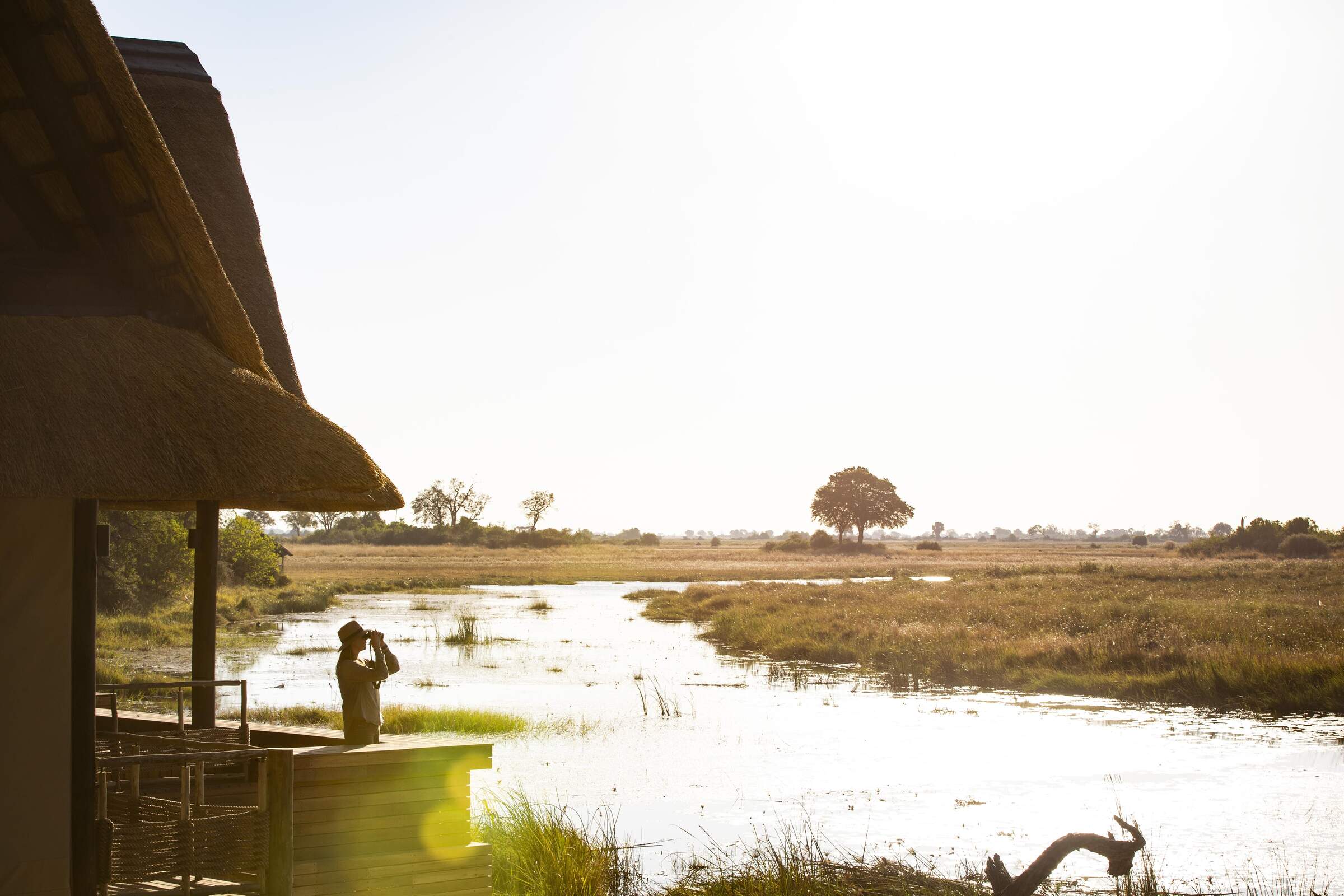
Kings Pool
King’s Pool is a top-end luxury safari camp with a price tag to match; the game viewing can be very good during the dry season.
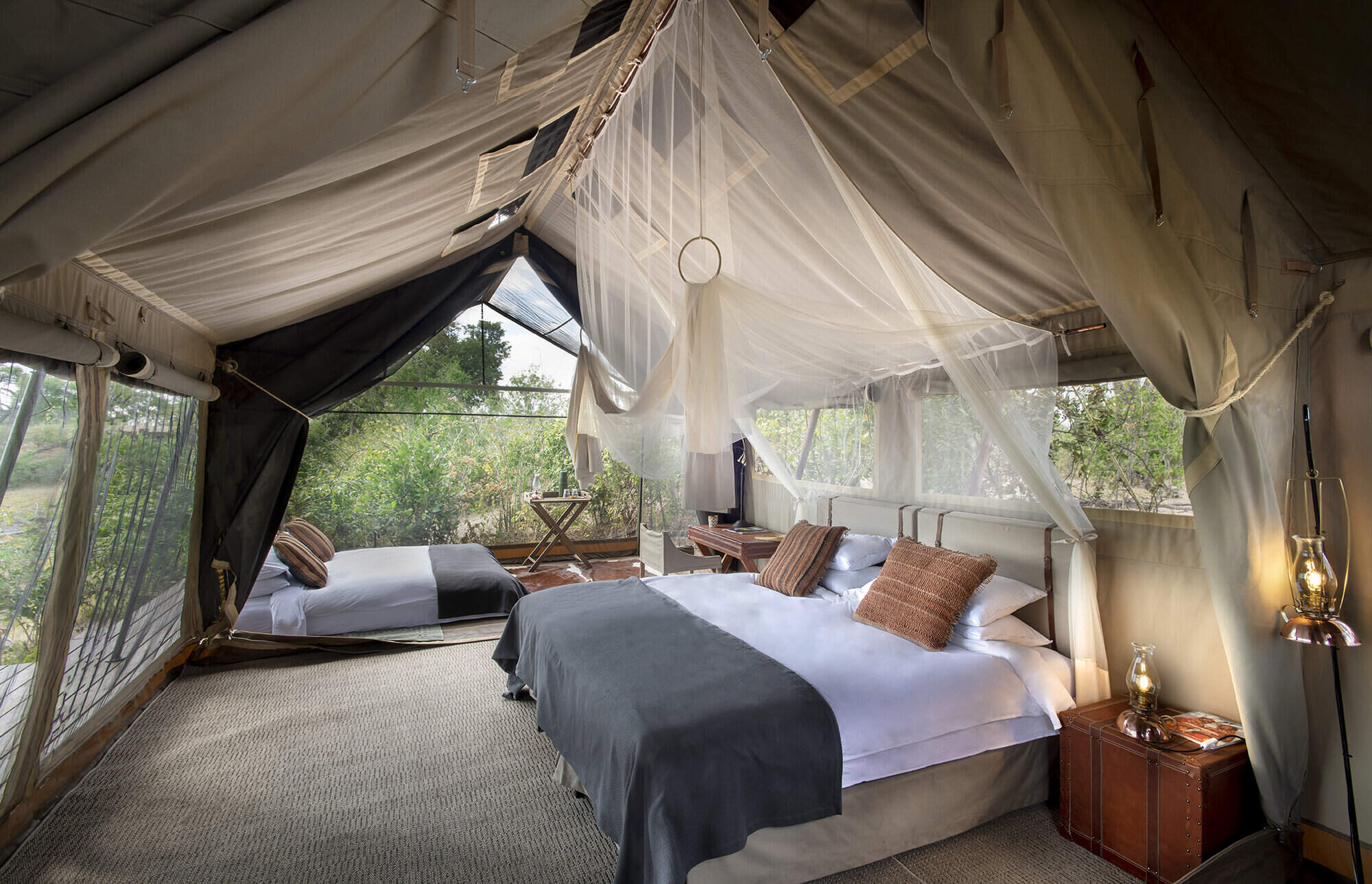
Linyanti Expeditions
Tip-top guiding. In tune with the habitat. Down-to-earth, authentic camp comfort. A place of wilderness safari harmony.
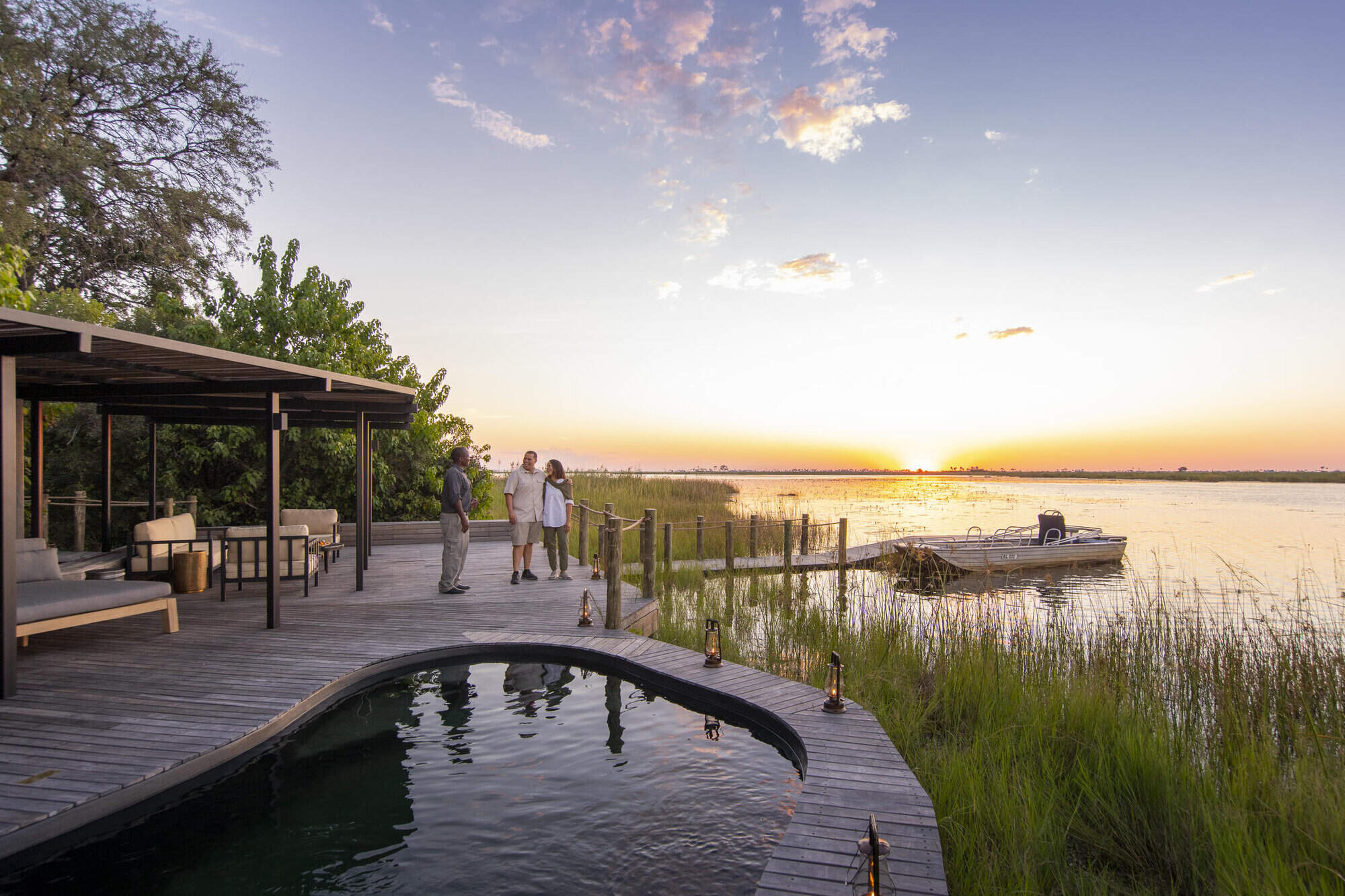
Little DumaTau
Small and sophisticated, Little DumaTau lies adjacent to its larger sibling in the private Linyanti Reserve, overlooking a beautiful lagoon.
When to go to Kwando-Linyanti area
Our month by month guide: What it's like to visit Zarafa Camp in Kwando-Linyanti area
Jan
Feb
Mar
Apr
May
Jun
Jul
Aug
Sep
Oct
Nov
Dec
Kwando-Linyanti area in January
January marks the peak of the rainy season in the Kwando, Linyanti, and Selinda Reserves. Evening thunderstorms bring short but intense rains, cooling the air while temperatures remain warm. Wildlife disperses across the lush landscape due to the abundant water, making game viewing more challenging, though the southern and western parts of the Selinda Reserve still offer rewarding sightings.
The Kwando River and Linyanti floodplains attract water-loving species such as red lechwe, sitatunga, and waterbuck. Migratory birds thrive during this time, offering incredible birdwatching opportunities. The vibrant greenery creates stunning photography backdrops, and lower rates make January a great choice for budget-conscious travellers seeking a quieter, greener safari.
- Warm temperatures with occasional thunderstorms
- Spectacular birdlife, including migratory species
- Wildlife dispersed across lush floodplains
- Zebra and wildebeest migration in full swing
- Good availability at lodges and camps
Our view
A good time to visit, with pros & cons
Weather in January
Kwando-Linyanti area in February
February continues the rainy season with heavy rains and a humid atmosphere. The landscape is vibrant and teeming with life. Insects and smaller animals become more visible, while many species are raising their young, making for fascinating wildlife encounters. The Selinda Spillway and Zibadianja Lagoon are magnets for diverse wildlife during this time.
Thick vegetation and tall grasses can make it harder to spot larger animals, but water-based activities like boat cruises along the Kwando and Linyanti rivers offer superb birdwatching. The reserves’ papyrus reed-beds are home to elusive species like sitatunga, while buffalo and elephants frequent the floodplains. With fewer visitors, February is perfect for those looking for a more intimate safari experience.
- Warm with occasional thunderstorms
- Young animals abundant across the reserves
- Dispersed wildlife across the lush terrain
- Birds thriving, many in breeding plumage
- Excellent camp availability and low visitor numbers
Our view
This is not a great time to visit
Weather in February
Kwando-Linyanti area in March
March marks the tail end of the rainy season, with sunny days becoming more frequent and occasional afternoon thunderstorms still sweeping through. The landscape remains lush, with many animals finishing raising their young. Predators like lions and wild dogs are more active, taking advantage of plentiful prey.
Birdwatching is still rewarding, although some migratory species start to leave as the season progresses. The Kwando River and its channels provide excellent fishing and wildlife viewing opportunities. As the rains taper off, game drives become more productive, particularly in open areas of the reserves.
- Variable weather with clearer skies and rains decreasing
- Wildlife well-fed and thriving in lush surroundings
- Birdlife remains spectacular, though migrants begin to leave
- Lower rates and fewer visitors at camps
Our view
A good time to visit, with pros & cons
Weather in March
Kwando-Linyanti area in April
April is a transitional month in the Kwando, Linyanti, and Selinda Reserves, marking the shift from the wet to dry season. Rainfall becomes less frequent, giving way to clear skies and a verdant landscape. Night temperatures start to drop, especially in areas further from water.
As vegetation begins to thin, wildlife viewing improves, with increased predator-prey activity around water sources. The Selinda Spillway becomes a focal point for diverse wildlife, including elephants, buffalo, and various antelope species. Predator activity starts to become more visible, particularly around permanent water sources. Walking safaris and boat cruises offer unique ways to explore the ecosystem. With the shoulder season starting, April provides good value and a mix of lush scenery and growing wildlife activity.
- Cooler evenings with occasional light rain
- Selinda Spillway ideal for diverse wildlife sightings
- Good predator-prey interactions observable
- Excellent conditions for walking safaris and boat trips
- Shoulder season rates make this a popular month
Our view
A good time to visit, with pros & cons
Weather in April
Kwando-Linyanti area in May
May is one of the best months to visit the Kwando, Linyanti, and Selinda Reserves. With almost no rain, temperatures cool further in the mornings and evenings, increasing predator activity. Wildlife begins to concentrate around permanent water sources like the Linyanti and Kwando rivers, providing superb game viewing opportunities, especially of elephants and buffalo.
The Selinda Reserve’s diverse landscapes attract a variety of species, and walking safaris in the Kwando Reserve provide close-up wildlife encounters. Crisp, clear air enhances photography, capturing the vibrant wildlife and scenic beauty. May offers a balance of fantastic wildlife sightings, pleasant weather, and the final stretch of shoulder-season rates.
- Cool mornings and evenings, minimal rain
- Excellent predator activity and game viewing
- Crisp air perfect for photography
- Shoulder season rates - availability limited
Our view
A very good time to visit
Weather in May
Kwando-Linyanti area in June
June signals the start of the dry season, with cool mornings and evenings and warm, sunny days. The clear skies and thinning vegetation make this an excellent month for photography and wildlife viewing. As surface water dries up, animals gravitate to permanent water sources like the Kwando and Linyanti rivers, where predators are often seen stalking prey.
Game viewing excels in the Kwando-Linyanti areas, with improved visibility as vegetation thins, and the Selinda Spillway becomes a wildlife hotspot, attracting elephants, buffalo, and other species. Boat cruises provide a peaceful way to observe water-dependent wildlife, while night drives offer glimpses of nocturnal predators and other species. June’s popularity means high demand for camps, so early bookings are essential.
- Warm days, cold nights—ideal safari conditions
- Excellent conditions for wildlife photography
- Animals congregating around water sources
- Vegetation thinning, improving visibility
- Peak season begins with higher rates
Our view
Fantastic: the very best time to visit
Weather in June
Kwando-Linyanti area in July
July offers excellent game viewing conditions. Cool mornings and evenings are ideal for wildlife activity. The landscape is drier, concentrating animals around remaining water sources. The Kwando and Linyanti rivers become crucial for wildlife, attracting large herds of elephants and buffalo. Predator sightings increase, especially around waterholes. The Selinda Reserve's diverse habitats support a wide range of species, from big cats to rare antelopes.
It's one of the best months for walking safaris - cool and fresh in the mornings, with thinning vegetation enhancing visibility. Boat cruises provide serene views of the rivers and their surrounding wildlife. Night drives reveal fascinating nocturnal species, though temperatures can be chilly, so warm clothing is essential. July's popularity means camps are often fully booked, so early reservations are essential.
- Comfortable days, cold mornings and nights
- Excellent game viewing around waterholes and rivers
- Walking safaris and boat cruises highly recommended
- Peak season with camps often fully booked
Our view
Fantastic: the very best time to visit
Weather in July
Kwando-Linyanti area in August
August is a peak safari month, with warm days and cool nights offering comfortable conditions. Wildlife is highly concentrated around water sources, providing exceptional game viewing. The Selinda Spillway becomes a focal point for predators and prey, with frequent sightings of elephants, buffalo, and big cats.
Boat cruises along the Kwando and Linyanti rivers offer a unique perspective on the reserves’ wildlife, while clear skies make for incredible stargazing at night – but it’s cold so bring warm clothes, hats and gloves. August's popularity for northern hemisphere travellers means limited availability and higher rates at most camps.
- Dry, warm days with cool nights
- Wildlife activity peaks around water sources
- Okavango floods usually reach Selinda Spillway
- Super stargazing on clear nights
- High rates and limited availability in camps
Our view
Fantastic: the very best time to visit
Weather in August
Kwando-Linyanti area in September
September is a favourite for wildlife enthusiasts, with probably the best wildlife viewing of the year. Daytime temperatures are warming, but nights remain cool. The dry landscape concentrates wildlife around permanent water sources like the Kwando and Linyanti rivers, and along the Selinda Spillway. Large herds of elephants and buffalo are common on the floodplains, and predator sightings increase, with higher chances of witnessing dramatic hunting interactions.
The return of migratory birds like carmine bee-eaters adds a splash of colour to the reserves, enhancing birdwatching. The dry, hazy conditions create dramatic sunsets, while boat cruises and game drives offer rewarding, laid-back wildlife encounters. September’s popularity means high rates and limited availability at most camps, with early booking is essential.
- Warm days, cool nights—prime safari weather
- Exceptional wildlife viewing and predator activity
- Stunning sunsets and excellent birdwatching
- High season continues with limited availability
Our view
Fantastic: the very best time to visit
Weather in September
Kwando-Linyanti area in October
October is the hottest and driest month in these reserves, creating some of the most concentrated and dramatic wildlife sightings of the year. Animals gather around dwindling water sources, leading to intense predator-prey interactions. The Selinda Spillway becomes a lifeline for both herbivores and carnivores.
Boat cruises offer relief from the heat and a chance to observe water-dependent species. Migratory birds continue to arrive, adding vibrancy to the parched landscape. The clear, hazy conditions create spectacular photographic opportunities, particularly at sunset. Night drives are not nearly so cold and can reveal fascinating nocturnal activities. Despite the daytime heat, October remains a favourite for game viewing.
- Hot days, with chances of rain late in the month
- Outstanding big game sightings around limited water sources
- Excellent birdwatching with arriving migrants
- Water activities limited as floods recede
- Final month of peak season - high demand at camps
Our view
Fantastic: the very best time to visit
Weather in October
Kwando-Linyanti area in November
Sometime in November usually marks the start of the green season as temperatures and humidity rise, leading to the first dramatic thunderstorms. The landscape begins to transform, with fresh greenery spreading across the reserves. Wildlife starts to disperse as waterholes refill, but predator sightings remain good near permanent water sources. The Kwando and Linyanti rivers remain important for the large herds of elephants, and the Selinda Spillway continues to attract wildlife.
This is a fantastic time for birdwatching, with migratory species arriving in abundance. Where available, boat cruises highlight the changing environment, while game drives still offer rewarding wildlife encounters. Early November sees lower rates, making it a good choice for travellers seeking great game viewing at lower rates.
- Hot days with increasing humidity and dramatic thunderstorms
- Green season begins transforming landscape
- Wildlife viewing less predictable but rewarding near rivers
- Migratory birds arrive, enhancing birdwatching
- Shoulder season offers lower rates and good availability
Our view
A good time to visit, with pros & cons
Weather in November
Kwando-Linyanti area in December
December marks the height of the rainy season, bringing welcome relief from the high temperatures. While wildlife viewing becomes more challenging due to the dispersal of animals, skilled guides can still uncover remarkable sightings. The Kwando and Linyanti rivers remain vital habitats, and areas such as the Selinda Reserve offer rewarding game viewing, especially around Zibadianja Lagoon.
The landscape undergoes a dramatic transformation as fresh growth attracts herbivores. Migratory birds are plentiful, making this an excellent time for birdwatching. Although predator sightings are less frequent, they are often spectacular against the vibrant, lush scenery. Luxurious camps offer comfortable retreats during occasional rain showers, and lower-season rates make December an appealing choice for value-conscious travellers seeking a green-season safari.
- Warm with frequent rain storms
- Wildlife more dispersed across the reserves
- Green season in full effect, lush landscapes
- Low season rates make it a value-friendly option
Our view
A good time to visit, with pros & cons
Weather in December

Looking for inspiration on where to travel next?
Visit our trip chooser to explore your options and find inspiration for your perfect African adventure
Inspire me